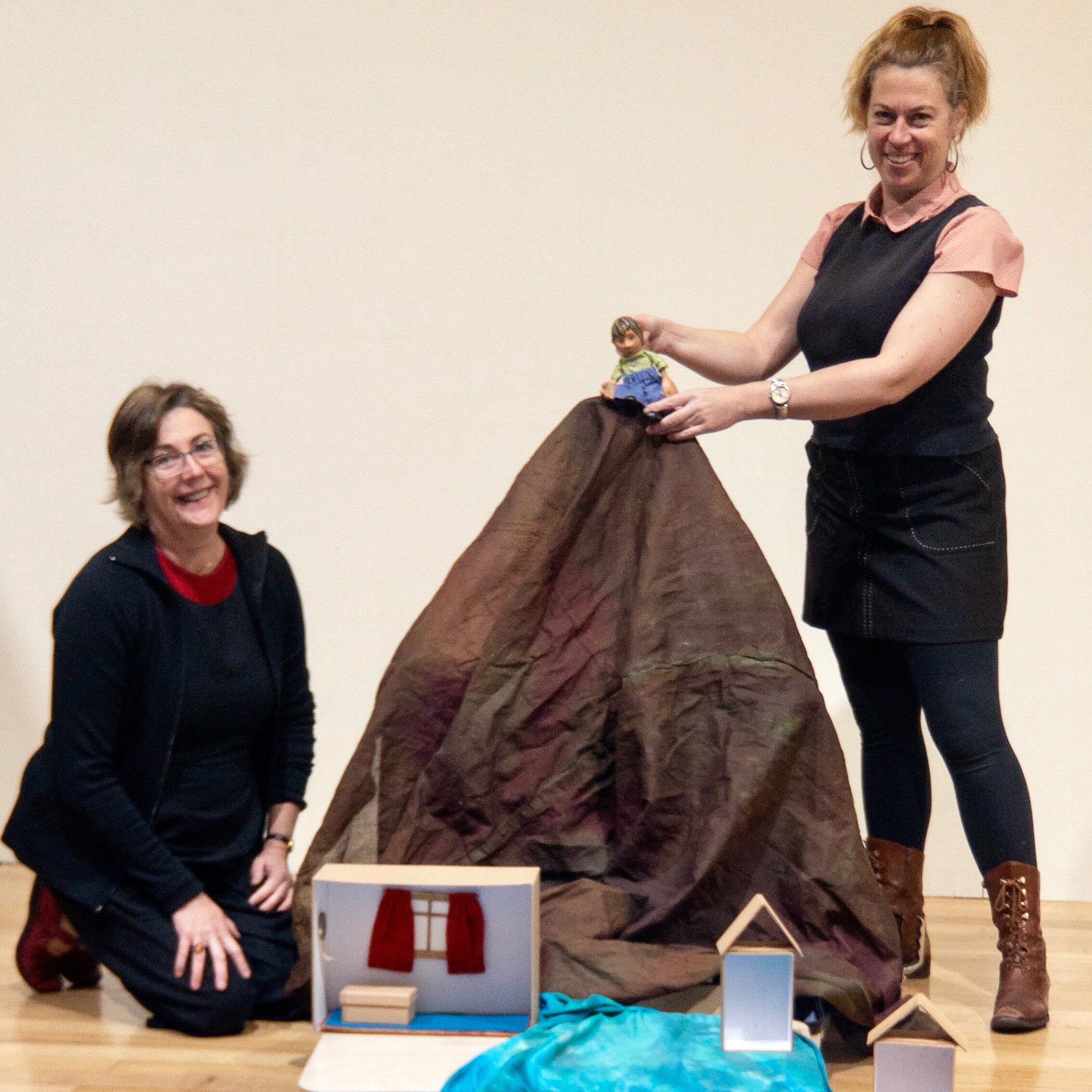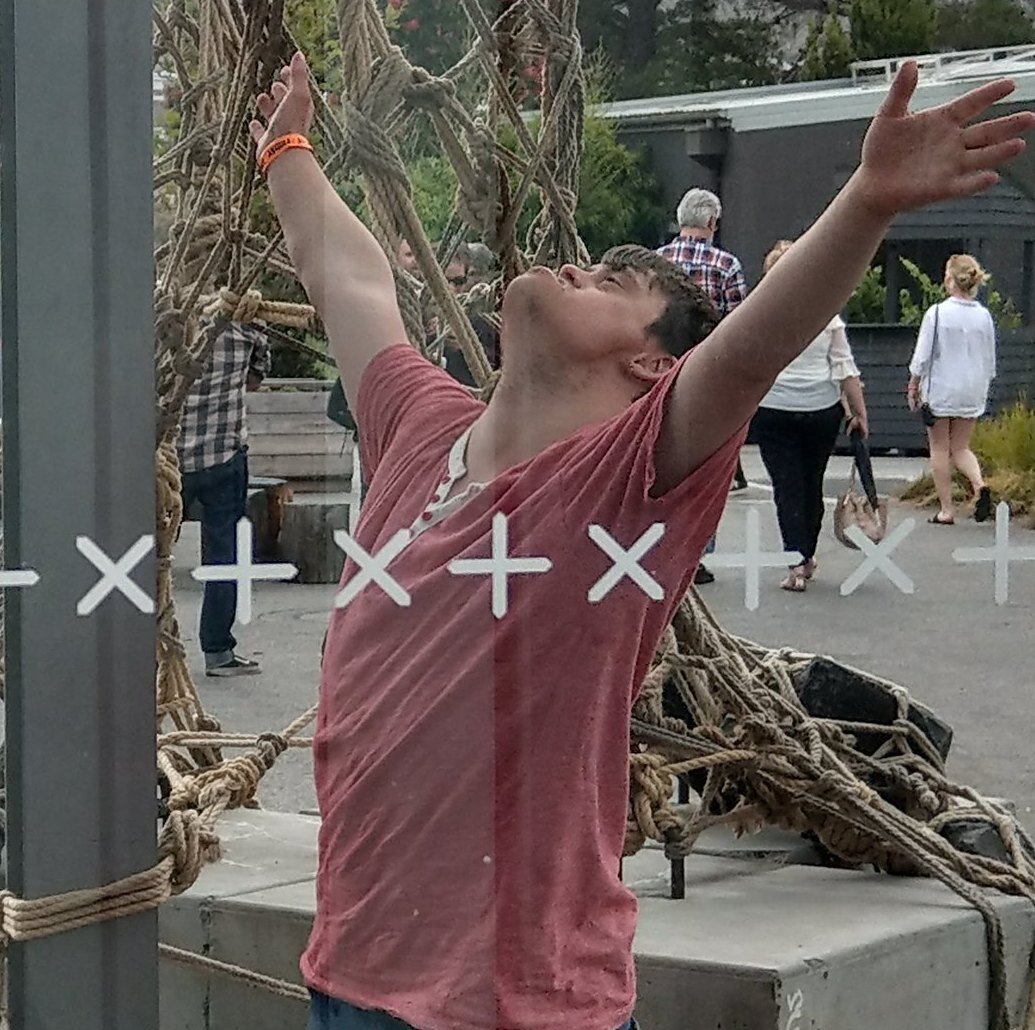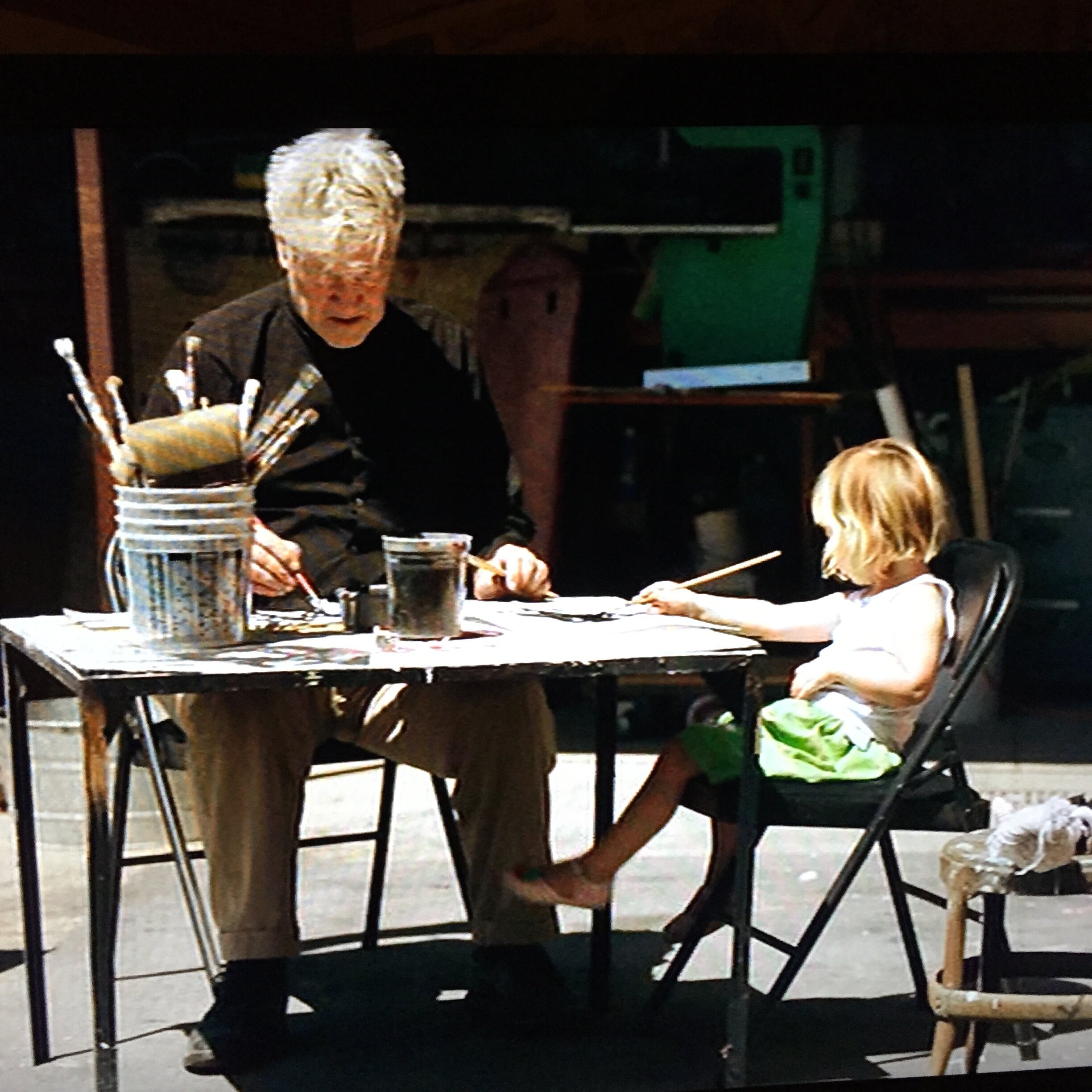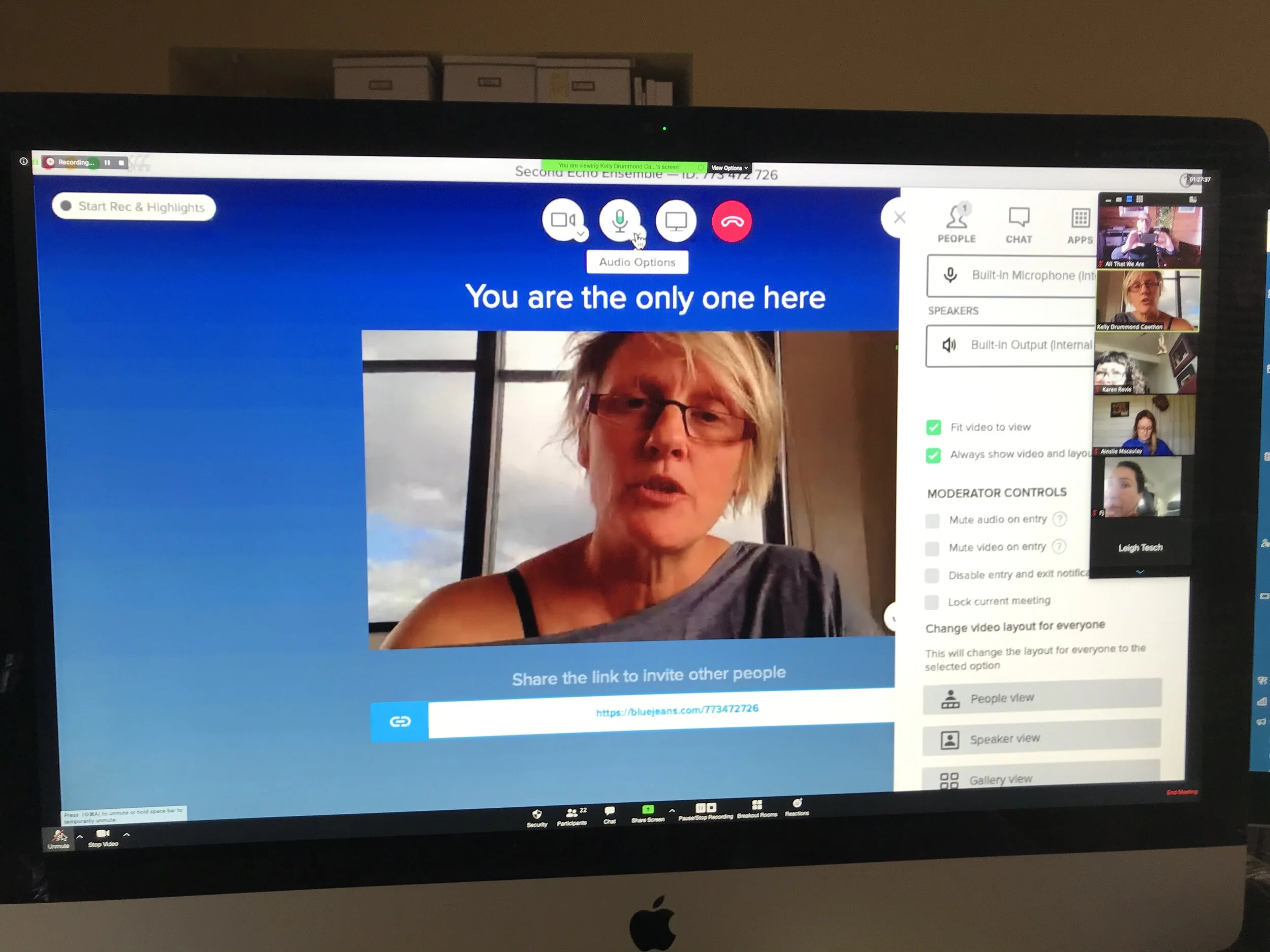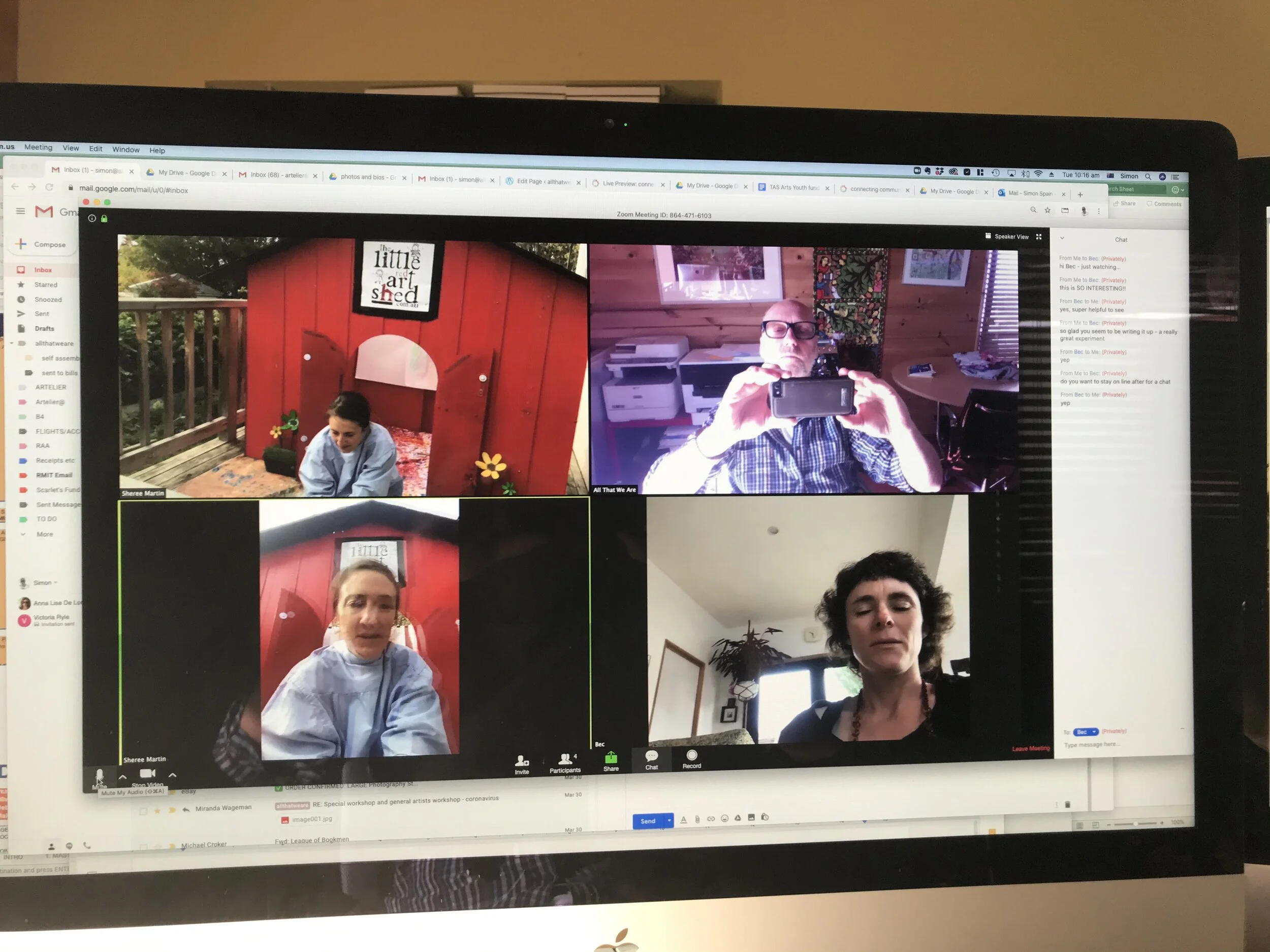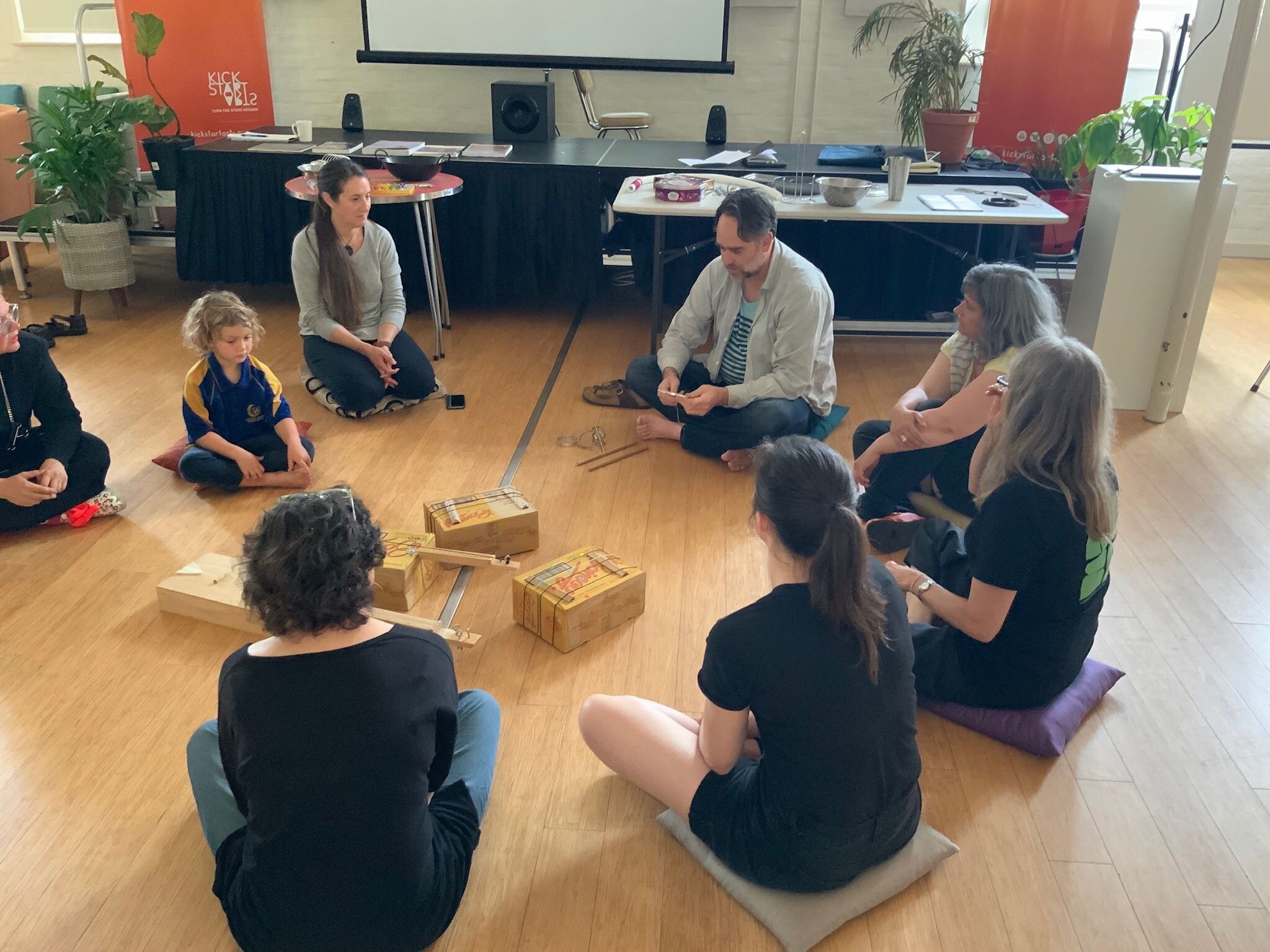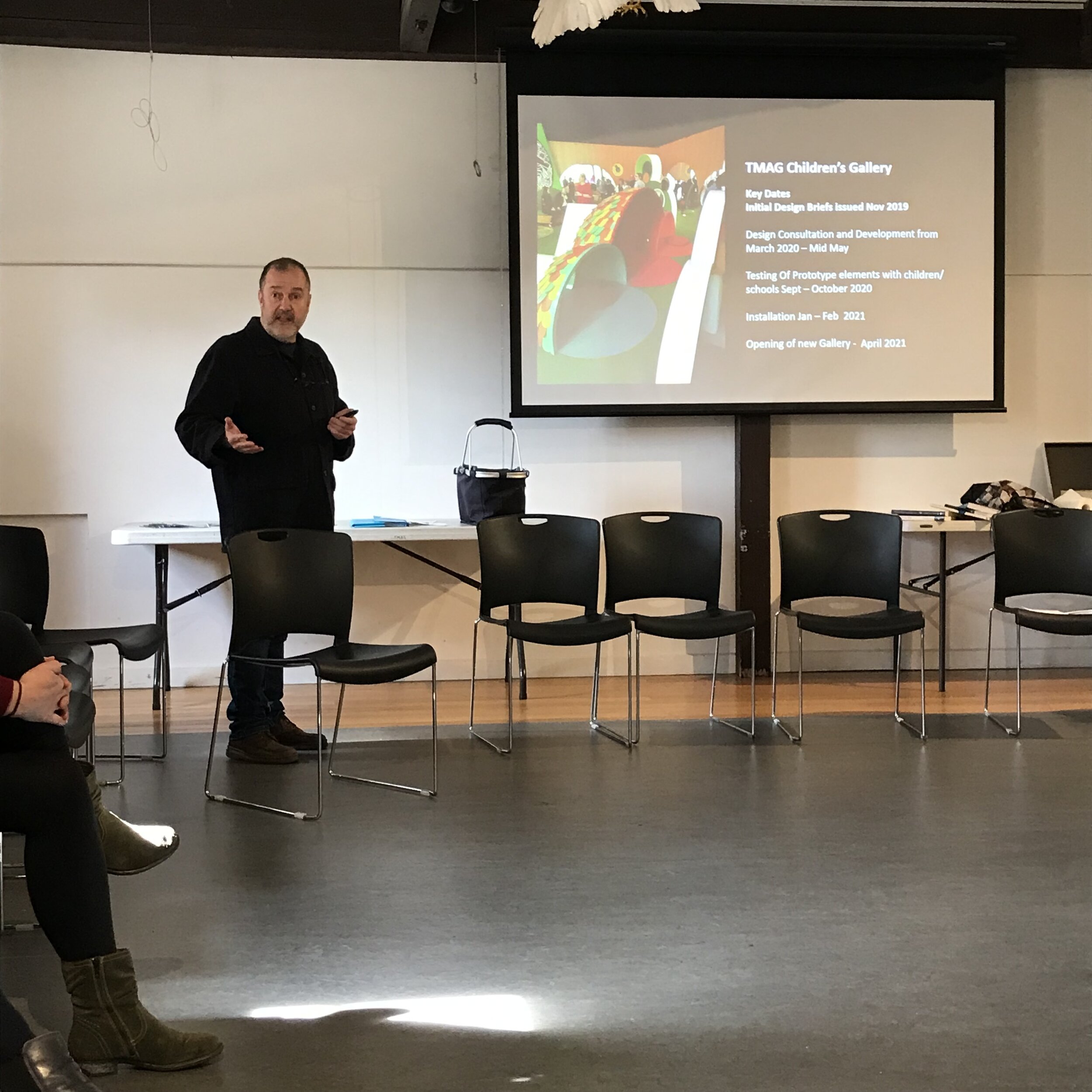Upcoming ArTELIER events:
ArTELIER events and resources
This calendar can be used to see what the upcoming ArTELIER events are but also to look back at ArTELIER programming since 2018.
LEARNING EXCHANGES;
Face -to-face LEARNING EXCHANGES need to be booked and offer a $250 stipend for artists to contribute. There are also travel allowances available (see FAQs). These usually run from 9.30am - 4.30pm. No face-to-face meetings are currently planned.
ZOOM LEARNING EXCHANGES last 3 hours. Please use the booking link to register - currently we are placing no restriction on numbers of ArTELIER artists.
SATELLITE Learning Exchanges are FREE to ArTELIER artists but no stipend is offered.
Once a LEARNING EXCHANGE has taken place we change that event to become a LEARNING EXCHANGE RESOURCE - inside you’ll find resources created on the day including ideas (where possible) together with a portfolio of images of the day.
SHIFTING AND STIRRING are created in partnership with Sydney Opera House, ArtPlay, Art Gallery of WA and maybe-together, These do not pay a stipend for artists.
MULTI SESSION PROJECT shows public creative encounters from the specific ArTELIER projects - you can book for these on this site.
SEARCH events…
Previous ArTELIER events:
Or you can browse by this INDEX…
-
HUB
- Feb 12, 2020 HUB: ArTELIER planning team Feb 12, 2020
- Mar 4, 2020 HUB: ArTELIER planning team Mar 4, 2020
- Apr 1, 2020 HUB: ArTELIER planning team Apr 1, 2020
- Apr 15, 2020 ZOOM HUB: ArTELIER planning team Apr 15, 2020
- May 6, 2020 HUB: ArTELIER planning team May 6, 2020
- Jun 3, 2020 HUB: ArTELIER planning team Jun 3, 2020
- Jun 10, 2020 HUB: ArTELIER planning team Jun 10, 2020
- Jul 1, 2020 HUB: ArTELIER planning team July 2020 Jul 1, 2020
- Aug 5, 2020 ZOOM HUB: ArTELIER planning team Aug 5, 2020
-
LEARNING EXCHANGE
- Jun 20, 2018 LEARNING EXCHANGE RESOURCE: What do we mean by participation and engagement? Jun 20, 2018
- Sep 25, 2018 LEARNING EXCHANGE RESOURCE: Building the value of the creative arts in education Sep 25, 2018
- Sep 26, 2018 LEARNING EXCHANGE RESOURCE: Learning on Country Sep 26, 2018
- Oct 31, 2018 LEARNING EXCHANGE RESOURCE: Valuing Youth Arts Oct 31, 2018
- Feb 6, 2019 LEARNING EXCHANGE RESOURCE: Signals, Technology, Children and Young People Feb 6, 2019
- Jun 26, 2019 LEARNING EXCHANGE: Collective Process 1 Jun 26, 2019
- Jun 28, 2019 LEARNING EXCHANGE: Collective Process 2 Jun 28, 2019
- Aug 28, 2019 LEARNING EXCHANGE RESOURCE: Decolonising Practice Aug 28, 2019
- Sep 26, 2019 LEARNING EXCHANGE RESOURCE: The Voice of the Child Sep 26, 2019
- Oct 29, 2019 LEARNING EXCHANGE RESOURCE: Reflecting Diversity Oct 29, 2019
- Dec 18, 2019 LEARNING EXCHANGE RESOURCE: Relationships and Partnerships Dec 18, 2019
- Feb 19, 2020 LEARNING EXCHANGE RESOURCE: The Expanded Classroom Feb 19, 2020
- Mar 10, 2020 LEARNING EXCHANGE RESOURCE: Capturing Process Mar 10, 2020
- Apr 8, 2020 ZOOM LEARNING EXCHANGE RESOURCE: Being and Belonging - connection to Country Apr 8, 2020
- Apr 16, 2020 ZOOM LEARNING EXCHANGE RESOURCE: Developing online creative encounters Apr 16, 2020
- Apr 30, 2020 ZOOM LEARNING EXCHANGE RESOURCE: Personal and Public - integrating a creative life Apr 30, 2020
- May 18, 2020 LEARNING EXCHANGE RESOURCE: Developing your creative practice to manage trauma, loss and uncertainty May 18, 2020
- Jun 9, 2020 ZOOM LEARNING EXCHANGE RESOURCE: PLACE AND (DIS)PLACE Jun 9, 2020
- Jul 9, 2020 ZOOM LEARNING EXCHANGE: Moving artists from being BEGGAR ELITES into co-creating richer lives with others Jul 9, 2020
- Aug 6, 2020 ZOOM LEARNING EXCHANGE: Art as Action Aug 6, 2020
- Sep 10, 2020 SATELLITE LEARNING EXCHANGE: Why does your Art Matter? with Tim Butcher Sep 10, 2020
-
NATIONAL LEARNINGEXCHANGE
- May 21, 2020 SATELLITE session: ArTELIER: Shifting & Stirring May 21, 2020
- Jun 2, 2020 SATELLITE session: Shifting & Stirring 2 - Responding slowly & trusting emergent process Jun 2, 2020
- Jun 19, 2020 SATELLITE session: Shifting & Stirring 3 Jun 19, 2020
- Jun 29, 2020 SATELLITE session: Shifting & Stirring 4 Jun 29, 2020
- Jul 29, 2020 SATELLITE session: Producing and programming for children and families with Alex Desebrock Jul 29, 2020
-
PROJECT
- Mar 7, 2019 – Mar 10, 2019 MULTI SESSION PROJECT: ArTELIER DEEP DIVE at Nayri Niara Mar 7, 2019 – Mar 10, 2019
- Apr 26, 2019 – Apr 29, 2019 MULTI SESSION PROJECT: ArtPlay Artists Exchange - part one Apr 26, 2019 – Apr 29, 2019
- May 11, 2019 MULTI SESSION PROJECT: B4 artist and teacher workshops May 11, 2019
- Aug 30, 2019 – Oct 30, 2019 MULTI SESSION PROJECT: Skills for Kids Cafes Aug 30, 2019 – Oct 30, 2019
- Feb 28, 2020 MULTI SESSION PROJECT: Skills 4 Kids Cafe Feb 28, 2020
- Apr 16, 2020 ZOOM LEARNING EXCHANGE RESOURCE: Developing online creative encounters Apr 16, 2020
- Jul 13, 2020 stART@home ➤ PUMP UP THE JAM DANCE with Robin Godfrey (Session 1/3) Jul 13, 2020
- Jul 15, 2020 stART@home ➤ Dance On Deck with Robin Godfrey Jul 15, 2020
- Jul 17, 2020 stART@home ➤ Dance On Deck online with Robin Godfrey Jul 17, 2020
- Jul 28, 2020 stART@home ➤ OYSTER SONGS with Sarah Jane Moore Jul 28, 2020
- Aug 27, 2020 stART@ Rosny College ➤ BLANK CANVAS with Mostafa Faraji Aug 27, 2020
- Oct 5, 2020 stART@ Salamanca Arts Centre ➤ WHO LIVES IN YOU with Luke Campbell Oct 5, 2020
- Oct 5, 2020 stART@ Salamanca Arts Centre ➤ RECIPE FOR A STORY with Bella Young & Emma Skalicky Oct 5, 2020
- Oct 6, 2020 stART@ Salamanca Arts Centre ➤ LISTENING TIME with Catherine Morse Oct 6, 2020
- Oct 12, 2020 stART@ Salamanca Arts Centre ➤ SMALL STORIES with Leigh Tesch & Kirsty Grierson Oct 12, 2020
- Oct 13, 2020 stART@ Salamanca Arts Centre ➤ LISTENING TIME with Catherine Morse Oct 13, 2020
-
RESOURCE
- Jun 20, 2018 LEARNING EXCHANGE RESOURCE: What do we mean by participation and engagement? Jun 20, 2018
- Jul 25, 2018 LEARNING EXCHANGE RESOURCE: Giving Voice to Young People Jul 25, 2018
- Sep 25, 2018 LEARNING EXCHANGE RESOURCE: Building the value of the creative arts in education Sep 25, 2018
- Sep 26, 2018 LEARNING EXCHANGE RESOURCE: Learning on Country Sep 26, 2018
- Oct 31, 2018 LEARNING EXCHANGE RESOURCE: Valuing Youth Arts Oct 31, 2018
- Nov 28, 2018 LEARNING EXCHANGE RESOURCE: Authentic Engagement Nov 28, 2018
- Feb 6, 2019 LEARNING EXCHANGE RESOURCE: Signals, Technology, Children and Young People Feb 6, 2019
- Jul 24, 2019 LEARNING EXCHANGE RESOURCE: Pedagogy, Planning and Practice Jul 24, 2019
- Sep 26, 2019 LEARNING EXCHANGE RESOURCE: The Voice of the Child Sep 26, 2019
- Oct 29, 2019 LEARNING EXCHANGE RESOURCE: Reflecting Diversity Oct 29, 2019
- Mar 10, 2020 LEARNING EXCHANGE RESOURCE: Capturing Process Mar 10, 2020
- May 18, 2020 LEARNING EXCHANGE RESOURCE: Developing your creative practice to manage trauma, loss and uncertainty May 18, 2020
- Jun 9, 2020 ZOOM LEARNING EXCHANGE RESOURCE: PLACE AND (DIS)PLACE Jun 9, 2020
-
SATELLITE
- May 9, 2018 SATELLITE: What is a Teaching Artist May 9, 2018
- Apr 13, 2019 SATELLITE: Debby Marziaz on Grant writing for Arts Projects Apr 13, 2019
- Jul 5, 2019 – Nov 15, 2019 SATELLITE: Reading Room Jul 5, 2019 – Nov 15, 2019
- Feb 12, 2020 SATELLITE: SLACK online surgery Feb 12, 2020
- Apr 15, 2020 MULTI SESSION PROJECT: ArTELIER book briefing - Q and A Apr 15, 2020
- Aug 20, 2020 ZOOM SATELLITE session: Building resilience with Sunita Bala Aug 20, 2020
-
stART online
- Jul 13, 2020 stART@home ➤ PUMP UP THE JAM DANCE with Robin Godfrey (Session 1/3) Jul 13, 2020
- Jul 15, 2020 stART@home ➤ Dance On Deck with Robin Godfrey Jul 15, 2020
- Jul 17, 2020 stART@home ➤ Dance On Deck online with Robin Godfrey Jul 17, 2020
- Jul 28, 2020 stART@home ➤ OYSTER SONGS with Sarah Jane Moore Jul 28, 2020
- Aug 27, 2020 stART@ Rosny College ➤ BLANK CANVAS with Mostafa Faraji Aug 27, 2020
- Oct 5, 2020 stART@ Salamanca Arts Centre ➤ WHO LIVES IN YOU with Luke Campbell Oct 5, 2020
- Oct 5, 2020 stART@ Salamanca Arts Centre ➤ RECIPE FOR A STORY with Bella Young & Emma Skalicky Oct 5, 2020
- Oct 6, 2020 stART@ Salamanca Arts Centre ➤ LISTENING TIME with Catherine Morse Oct 6, 2020
- Oct 12, 2020 stART@ Salamanca Arts Centre ➤ SMALL STORIES with Leigh Tesch & Kirsty Grierson Oct 12, 2020
- Oct 13, 2020 stART@ Salamanca Arts Centre ➤ LISTENING TIME with Catherine Morse Oct 13, 2020

SATELLITE LEARNING EXCHANGE: Why does your Art Matter? with Tim Butcher
In this Learning Exchange, our aim will be to develop a shared understanding of why we each make art the way we do, to appreciate the meanings of our practices to ourselves and others, and discuss the role of art in our evermore uncertain world. My provocation to you begins the question in the title, unfolding through a series of related questions to open up opportunity to share your ideas and experiences, and together imagine new possibilities. I will foreground those questions with some ideas about the affects and materialities of making art, and how their relationalities with the body produce particular aesthetics that create multiple meanings. To illustrate these concepts, I will share my own practice, through which I use film photographic methods in my academic research to understand how socially engaged artists make sense of why they do what they do despite having precarious working lives. I will present three tales of precarity from my current project.
Tim is Associate Professor of Organisation Studies at the Tasmanian School of Business and Economics. Before joining the University of Tasmania, he held academic positions at The Open University (UK), Griffith University, RMIT University and the University of Hull. Tim researches how we learn to adapt to evermore precarious work & worklessness.
He uses longitudinal visual ethnographic methods to understand how people make sense of their social, historical and emotional experiences of precarity. Tim currently collaborates with Arts organisations, including Counterpoints Arts and Tate Exchange in the UK to research precarious work in the Arts. His previous projects include: the ARC-funded ‘Wellbeing not Winning’ project, researching the value of sporting participation in remote Aboriginal communities; and Australian coworking/freelancer/startup

ZOOM LEARNING EXCHANGE: Art as Action
The Overwintering Project is an environmental art project inviting artists from Australia and New Zealand to visit, research, and respond to the unique nature of their local migratory shorebird habitat. Australia and New Zealand have over 100* internationally important shorebird overwintering sites. Printmaker and Project Co-ordinator Kate Gorringe-Smith will speak about the project and how ArTELIER artist can work with their communities to be involved in the exhibition at BRAG later in the year.

ZOOM LEARNING EXCHANGE: Moving artists from being BEGGAR ELITES into co-creating richer lives with others
In this session Arnie Aprill will be zooming in from Chicago to provoke us with how do we, as artists engaged in communities, move into more powerful positions to make key decisions about those communities. So oft artists are at the end of the line - how do we move up that line

ZOOM LEARNING EXCHANGE RESOURCE: PLACE AND (DIS)PLACE
What is the role of artists in communities - how can they contribute to their own and their communities’ a sense of place.

LEARNING EXCHANGE RESOURCE: Developing your creative practice to manage trauma, loss and uncertainty
This session brings practitioners and experts to ask how creative practice can support managing loss and uncertainty.
SPECIAL GUEST PROVOCATEUR - Esther Dreifuss-Kattan
“When dealing with major loss and mourning, if there is no integration through artistic expression, no idealisation of the self can take place, and instead one suffers the ‘depletion of the self by the shadow of the loss of the Other’ (Kristeva, 1989. p. 5). Giving a form through visualisation or verbalisation, however can stabilise the self and thus reestablish the narcissistic balance that had been overwhelmed by the archaic affects of trauma, illness or loss, thus initiating both an internal and external dialogue. Aesthetic expressive abilities allow the artist not only to connect to the Other, the viewer, but to reconstruct and recollect in a visual form his or her inner experiences as well.”
(Dreifuss-Kattan-Kattan, 2016. p. 2)
Esther Dreifuss-Kattan will join us from California to talk about her book, Art and Mourning. Esther will speak about how artists have used their creativity to face and work through traumatic and painful experiences of loss. As a psychoanalyst, art therapist, and artist Estare has analysed the work of major modernist and contemporary artists and thinkers through a psychoanalytic lens.
The structure of the morning is a bit different today due to availability of presenters…
10.00 - Acknowledgement of country & welcome, intro for the day’s run through
10.10 - Sharing practice - ceremony with Sinsa Mansell and revisitings with Simon Spain
10.50 Break off rooms
11.00 Provocation from guest - Esther Dreifuss-Kattan -
12.00 break
12.15 Break into chat rooms for discussions about provocations
12.45 wrap and ArTELIER business - next session etc…
Dr. Esther Dreifuss-Kattan is a psychoanalyst, psychotherapist and art therapist in private practice in Beverly Hills, California. Dr. Esther Dreifuss-Kattan was President of the New Center for Psychoanalysis in Los Angeles from 2016-2018. She works with adults of all ages, adolescents and children. Given Dr. Dreifuss-Kattan’s own artistic background, she specializes in helping clients who are involved in various creative pursuits and/or who work in the entertainment industry and the art world: film, television, music, visual arts, fashion, talent agents, academics, and those in public relations.
Dr. Dreifuss-Kattan’s second specialty is working with adult and pediatric cancer patients/survivors and their families as well as those with chronic pain. In addition to her private practice, she also works extensively with Los Angeles-based organizations devoted to treating those with illness. She is part of the team at Chai Lifeline West Coast, a non-profit organization that helps families who have a child with cancer. She is clinical consultant to the Pediatric Pain and Comfort Care Program at UCLA and Whole Child LA and a Group Facilitator/Clinical Specialist at the Hematology/Oncology Department at the David Geffen School of Medicine where she leads the “The Healing Arts Group” for the Simms/Mann UCLA Center for Integrative Oncology.
Dr. Dreifuss-Kattan also works with mature adults as they embark on retirement, set new personal and professional goals, and find continuedcreative inspiration. Dreifuss-Kattan also leads an Art Healing and Empowerment Workshop for women who are immigrants from Mexico through the Mar Vista Family Center in Los Angeles.
Dr. Dreifuss-Kattan is currently a senior faculty member at the New Center for Psychoanalysis. She has taught at UCLA Extension in the Health Sciences and Visual Arts departments, at Tel-Aviv University in Israel in the Clinical Psychology Graduate School, and at the Extension Program of Zurich University in Switzerland. Her published books and articles center on clinical practice and theory in psychoanalysis on Art Therapyand Psychooncology. She lectures nationally and internationally.
She received her PhD in Psychoanalysis from the Southern California Institute of Psychoanalysis, now the New Center for Psychoanalysis in Los Angeles, and earned another PhD in Art Therapy and Psychooncology from the Union Institute and University in Cincinnati, Ohio.
She is registered with the California Medical Board as a Research Psychoanalyst. RP-58, and credentialed as an ATCB art therapist with the American Art Therapy Credentials Board.
She is a member of the American Psychoanalytic and the International Psychoanalytic Association, the American Psychological Association and the American Art Therapy Association.
Dr. Esther Dreifuss-Kattan speaks fluent English and German, as well as conversational French and Hebrew.
EXTRAS:
You might want to listen to this CAT podcast before the session..
In this episode of What are you looking at? we talk to Reserved for Healing artist Michelle Maynard and Head of Indigenous Engagement and Strategy at MAAS, Marcus Hughes about cultural and artistic practice and the non-linear path of healing.
Reserved for Healing was an exhibition at Contemporary Art Tasmania exploring intergenerational knowledge and cultural exchange in Lutruwita/Tasmania, featuring Mae Ganambarr, Jack Langford, Kaninna Langford, Ruth Langford, Josie Mason, Warren Mason and Michelle Maynard.
The Reserved for Healing program focused on expanding the ambition of cultural production for Tasmanian Aboriginal artists and was developed through CAT and walantanalinany palingina (WaPa) working with support from the Australia Council’s Chosen initiative. WaPa and CAT partner on building capacity for delivering the First Nations festival, WaPa 22Ten22.

ZOOM LEARNING EXCHANGE RESOURCE: Personal and Public - integrating a creative life
Frida kahlo painting "the two Fridas"
by Nickolas Muray (American/Hungarian, 1892–1965)
"In practices that are both personally and publicly engaged, how do we integrate experiences and learnings from both worlds into a professional self? How do we allow one world to activate and strengthen the other? What happens if we experience great stress in our public or personal lives? How do we find balance and meaning from these experiences? What professional lessons are here for us?
The flow and exchange between these two worlds can bring great strength and depth to our creative growth and at times crisis in one can be a dynamic point of learning in the other. How do we remain healthy in the midst of this flow? What tools do we have or need to have to navigate this space? At a time when we are uniquely inhabiting our personal worlds, and almost devoid of public experiences, let’s take time to reflect on these two worlds..how they meet…how they flow..where the crossovers bring us life, both personally and professionally, and what we might learn for our future professional selves.
Time: April 30, 2020 10:00 AM Hobart
Join Zoom Meeting https://zoom.us/j/163721783 Meeting ID: 163 721 783
Bring a little talisman...a painting, a piece of writing, a memory, a thought, a shared conversation, a poem, a quote, a movement, a song, a composition that reveals something to you of your own journey with the meeting of these two worlds.. whether it is on a personal context, or a professional space.
We will take some time to share these with each other and reflect on them.
Please create a space on the day to move, sketch, compose, sing, notate, paint as we will finish with a little creative " integration" of the days work together via an artistic practice.
See you there!
10.00 - Acknowledgement of country & welcome, intro for the day’s run through
10.15-10.30 Break off rooms to have a quick hello & catch up
10.30-11.00 Julie Gough will speak about her experience of combining the personal and the public
11.00-11.30 break up room discussions on what Julie has given
11.30 cuppa break
11.45-12.15 Practice sharing from Catherine Morse
12.15-12.45 activity from provocation / sharing of material brought to session
12.45 wrap & any sharing & notices

ZOOM LEARNING EXCHANGE RESOURCE: Developing online creative encounters
The Virtually There project in Ireland
Welcome
Protocols
Acknowledgment of country
This explored the ‘now’ of our online world in response to COVID-19 as a tool for Artists to creatively adapt practice to facilitate online creative encounters with community.
We heard from Julie Forrester speaking live from Ireland about her experience with the ‘Virtually There’ project with Kelly Drummond Cawthon (Second Echo Ensemble) and Sheree Martin (The Little Red Art Shed) sharing their own early stage explorations into ZOOM and Blue Jeans as online platform options.
This is the 45 minute Zoom recording of Julie’s presentation with Q&A at the end.
“Thanks for inviting me to talk to the ArTELIER artists it was fun to share that stuff in another direction on the other side of the world!
I wish I could have stayed up for the rest but needed to grab my zzzzz for the next day, would love to see some avatars, so will keep checking in to your wonderful resource.
Here’s some info on the apps:
Stopmotion Studio Pro is the app - it is available for iphone, android and apple and pc desktops though much better on phone than desktop, it’s useful to have both - get it here https://www.cateater.com/
The other software we used has all expired pretty much since I got it on the iPads (2016!), sketches pro is still there and works well, autodesk sketchbook is cool for a bit of fairly limited motion stuff but fun effects, I am sure there are other great apps out there now, its just about but any current image compositing stuff will work in combination too with stopmotion studio. There are also other great stopmotion apps - really I think its a personal choice as much as anything, as with much software I have found that what works best for you may not be at all intuitive for me.. so out there and go a hunting - also kids are great teachers so if you are not techy (like me) they will show you how to do it.
In the classroom we used Collaborate and the Interactive Whiteboard, standard in UK schools very CLUNKY but had its own charm as we got to know it, most of the animation conversations with kids took place on this interface”
Julie is a Cork based artist, her work engages with random and rhythmic encounters with the everyday, where outcomes take the form of drawing, sculptural, photographic, moving image or other manifestations. Julie graduated in sculpture from the Slade School of Art, London, has qualifications in Community Arts Practice and Multi Media and holds an MA in Art Process from Crawford College of Art And Design. Passionate about the transformative power of creative practices, Julie has been working on residency in community settings since the 1990s with Cork Community Art Link, Triskel Arts Centre, Tigh Fili, Ogra Chorcai, Backwater Artists’ Group. and Kids’ Own Publishing Partnership. She is currently an education panelist with The Crafts Council of Ireland and The Crawford Art Gallery and works out of her studio in Cork City.
This image shows student avatars that lived on Julie’s studio desk - the practice of "proxy" in remote and virtual learning/play
Virtually There is a long-term project that places artists in schools via virtual technology. Running since 2007, the project supports artists to connect from their studios with teachers and children in the classroom, engaging in contemporary art practice that stems from the artists’ own studio practice.
At present, eight schools across Northern Ireland are working with eight artists from North and South and further afield.
The project has its own dedicated website, www.virtuallythere.org.uk, where you can closely follow its progress.
Here are some images from her work - she will speak for about 30 minutes about her work with the project and discuss the challenges and potential of working remotely.
Sharing our Practice:
Kelly Drummond Cawthon will speak about her work using bluejeans https://www.bluejeans.com/ and how this works with her communications and creative development with Second Echo Ensemble.
Sheree Martin (The Little Red Art Shed) will talk about her recent experience with online program delivery in Hobart.
Watch Sheree’s presentation here
ARTplaydate Online Exploration 1 #thelittleredartshedathome 31.03.2020

ZOOM LEARNING EXCHANGE RESOURCE: Being and Belonging - connection to Country
Connection to Country- Exploring the true identity of the elements of nature.
Led by Ruth Langford
““What if they are not inanimate objects as people in the West of been taught to believe but rather living presences? How would we need to change if we granted to a tree the kind of life that we usually reserve for so-called intelligent beings. If you peek long enough into the natural world the trees, the hills, the rivers and all natural things, you start to realise that their spirit is much bigger than what can be seen. That the visible part of nature is only a small proportion of what nature is. The Elders say that there is much, much more to seeing than simple sight.””
Here’s a link to a short preparation video that explains what you will need to bring along https://vimeo.com/403178299
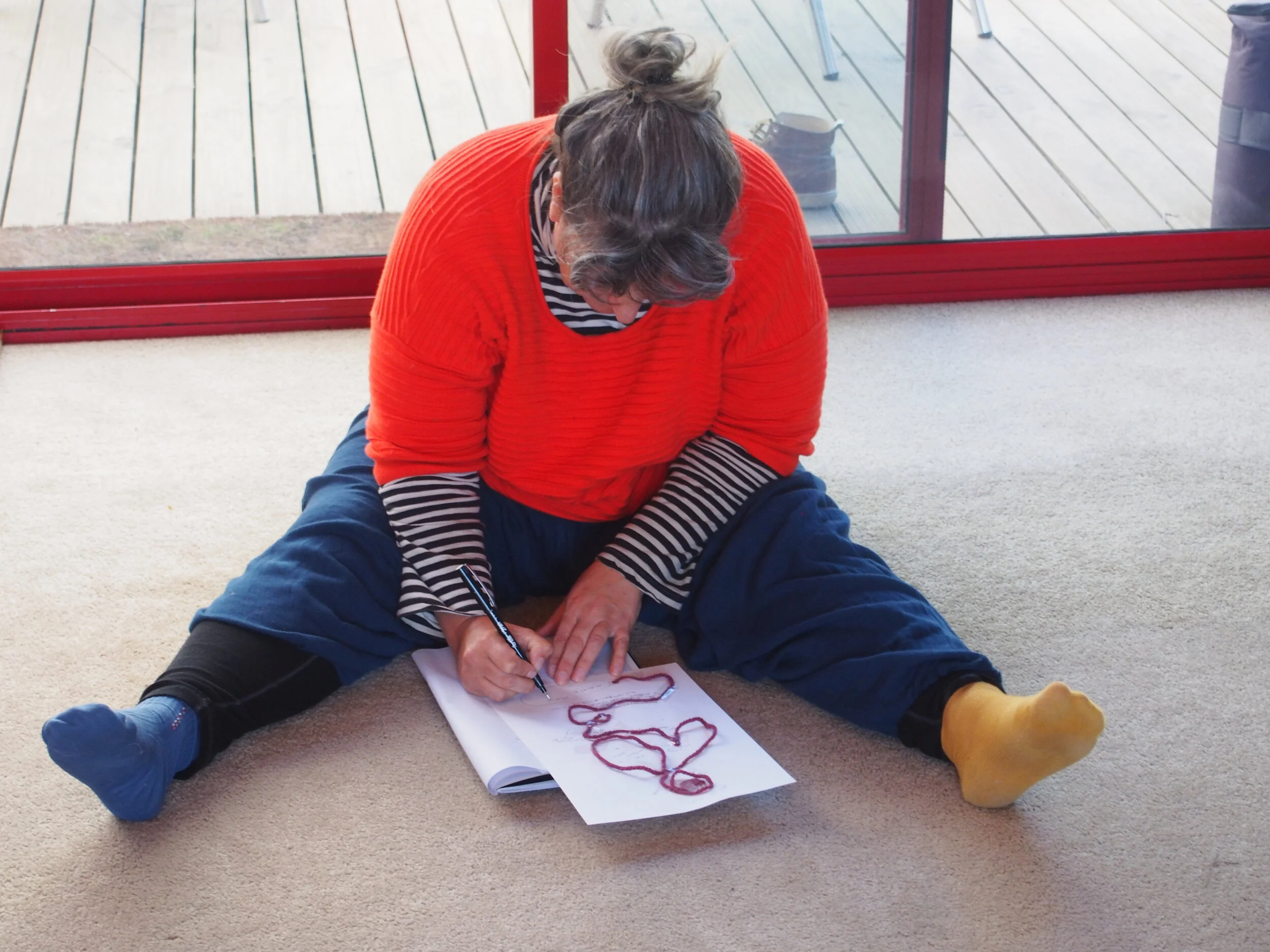
LEARNING EXCHANGE RESOURCE: Capturing Process
In this session we shall look at means of documentation and evaluation…

LEARNING EXCHANGE RESOURCE: The Expanded Classroom
The expanded classroom – how do we foster more work outside the prescribed learning centres and develop responsiveness to place? Spatial thinking in practice / response to site and learning on country.
This session acknowledges and celebrates that children learn in spaces beyond the classroom.
We will look at ways of engaging learning within the built and natural environment that allow children to be present to the complexities of the spaces we inhabit.
Some of the provocations for discussion are:
• What spaces provide the spark of curiosity to action children’s imagination?
• What and where are these spaces? How do we access them?
• What are the some of the logistical issues?
• What’s the historical lineage and context of ideas around the expanded classroom?
• Offering ideas on engaging in public spaces that offer non-traditional learning opportunities.
• Why is it important? What are the implications and benefits?
This session will take place in the Banksia Room at The Royal Tasmanian Botanic Gardens and will feature some provocateur presentations, some hands'-on elements outdoors and a shared picnic.
PROGRAM The Expanded Classroom
9.15 - 9.30 Introduction
9.30 - 11 Provocateur: David Gilkes
David Gilkes has been in early years education for over 25 years, the majority of this time working as a teacher alongside 4 and 5 year old children and their families in both Hobart and Canberra. David’s leadership roles include Director of an Early Learning Centre and an Early Years Network Leader in the Tasmanian Department of Education. The Reggio Emilia educational project and its provocation for the Australian context has inspired and challenged David for many years. He is currently the convener of the Tasmanian Reggio Emilia Network. In 2014 David was awarded a National Excellence in Teaching Award for Innovation in Early Childhood. David has published several articles and spoken at a number of conferences. He now works full-time as an Education Consultant, supporting individuals and teams of people around the country.
“David Gilkes – Beyond the Gate,
Notes, quotes, and thoughts…
David’s provocation was dense and inspiring so pulling out a few details is hard.
Two of the extraordinary projects with children that he shared, The Empty Shop and the Giraffe in the City particularly resonated with me as strong examples of what happens when educators embrace learning beyond the classroom – ‘getting outside as authentic, pleasurable, emotional, aesthetic (and providing) interconnected ways of understanding and making sense of the world.”
They began with an inquiry of ‘how can we make children more visible in our community? and let this grow by documenting and listening attentively to the kids.
David shared his favourite question, ‘how can you show me your thinking’? and reflected that it was a “richer inquiry because we listened and were responsive”.
Two quotes from those projects struck me and propelled my thinking. Sam offered that the city is “for grown ups because grown ups can go to the city and eat there and have good silence. Kids can wreck things”.
Loris Malaguzzi (1970) wrote that “Cities, in the emblematic sense of the world, continue to grow to an exclusively adult measure. They are built for individuals of working age; homes, streets, squares, workshops, cinemas, theatres, cars, motorways are built for them…The truth is children are excluded… However the fact is that if cities and houses are not made for children, then neither are they made for mankind”.
For me David’s commitment to the Reggio Emilia approach and embodied delivery of it was particularly inspiring. “Our image in Reggio Emillia, part of our theory, views children as strong, powerful, and rich in potential and resources, right from the moment of birth”. Reggio holds a strong image of the child as capable, competent, creative, collaborative, and an active citizens, for me David extended this by offering that if we see children in this light it in turn urges us to see adults in this light, which in turn urges us to hold a strong image of community.
During the provocation there were so many shared wisdoms for planning, some being….
Thinking of ‘design’ rather than ‘plan’. Design is non-linear and allows for learning to go in unexpected ways.
“Potential is stunted when an endpoint is formulated in advance” Rinaldi
What if we think of:
process v’s product
listening v’s telling
questions v’s answers
depth v’s bredth
TRUST the kids will take an inquiry somewhere, and trust in ourselves as artists. Trust your idea. In overly directing participants we are not trusting them.
Bringing people along with us, use kids and parents as documenters – with notepads, pens, camera or ipad. The investigation becomes the journey.
”
Morning tea 11- 11.30
11.30 - 1.00 Shared Practice: Sheree Martin, ArTELER artist will share her recent project in the Botannical Gardens, 'Nature Framed'.
Sheree will lead a creative encounter similar to that which she did during her project. Her invitation to families was : 'We will wander and wonder in the gardens, collect nature curiosities, create a family collaborative artwork, capture the moment via a polaroid for you to take home and gift back our curious collections to Mother Nature. An ephemeral ARTplayful experience'.
Following the creative encounter we will have a guided discussion about the project, intended as a debrief on the nitty gritty working, planning and reflective aspects of this project.
It is intended that this will be a two way process of interrogation of the project and from this we will develop a structure for the ArTELIER 'shared practice' sessions, along with a toolkit for safe and positive strategies for peer critique of projects.
Lunch 1 - 1.45 BRING SOMETHING TO SHARE FOR LUNCH
The afternoon session will consist of interrogating a couple of case studies presented by ArTELIER artists and others.
1.45 - 2.45 Shared Knowledge
A group discussion on our encounters and understandings of learning within the an expanded classroom. Please share your thoughts and experinences.
2.45 - 3.00 Encounters with a Classroom' A 10 minute video of the New Horizons preschoolers inquiries from 2019 around the city of Hobart.
Bush Kinder - Jenny Dudgeon at the Sustainabilty Centre, a 5 minute video.
The Art Play Backyard : Simon Spain
3.00 - 4.00 A snap shot of projects related to the theme
The Seed Garden Project: Bec Stevens, in collaboration with Kris Schaffer, New Horizons Pre School for Salamanca Arts Centre

LEARNING EXCHANGE RESOURCE: Relationships and Partnerships
Facilitators
Bec Stevens, Andy Vagg, Leigh Tesch
9.15 - 9.30
Introduction
9.30 - 11
Provocateurs: Jami and Richard Bladel
Jami Bladel has been the Artistic Director and CEO of Kickstart Arts since 2006. Kickstart
Arts is a current Key Organisation of the Australia Council for the Arts. Prior to that she was
the Artistic Director of Big Wig Youth Theatre in Hobart for 7 years. Jami has worked extensively as a freelance theatre director, actor, writer, producer, dramaturge and performing arts educator. She has directed over 37 arts projects, written 4 plays, brokered arts/health and community partnerships, worked as a teaching artist and is mentor to emerging artists and producers. She studied Acting at the VCA school of Dramatic Art, graduating in 1987 and completed a Bachelor of Education at the University of Tasmania in 2000, and is currently studying for a Masters in Advanced Leadership through Monash University in association with Women in Leadership Australia.
Richard Bladel is well into his third decade of working as a professional artist. At one time or another he has worked with all sorts of arts organisations as a writer, playwright, dramaturg, video maker and as a producer of projects in music, visual arts, digital media, performance and writing. Richard has a focus on encouraging the expression and inherent creativity of people of all ages, building connections between people through art making and on breaking down the barriers between the arts and other sectors. He studied BA in Communications at the University of Technology, Sydney during the 80s, majoring in film theory and production. He was founding Artistic Director of Kickstart Arts, and managed the organisation from 2001- 2007. From 1998 to 2000 he was Arts Officer at The Tasmanian Trades & Labor Council (now Unions Tasmania).
Morning tea 11- 11.30
11.30 - 12.00
Andy Vagg and Bec stevens
Andy was the lead artist engaged by Kickstart for the recent Remembering the Future project. Bec came on board as support arist for finalising the project. Andy will speak about the methods used for team building and collaboration through the project. "Remembering the Future developed from my work in 2017-2018 on the ongoing Kickstart Art site-sensitive Healing Ground community project at the former Orphan School buildings at St Johns Park New Town. Children worked on the adjacent city farm and orphan schools, leaving at thirteen as indentured farm labourers or domestic servants until they were eighteen. They were essentially being prepared for a life as the “industrious poor” of the nineteenth century. In response to my critical examination of the orphan schools I asked myself: How well are we preparing our children for life in the twenty-first century: one of climate change, burgeoning populations, and dwindling resources? "
12.00 -12.30
Adam Potito, the Principle of New Town Primary School will speak about the partnership that enabled Remembering the Future. This is an informal Q&A session where we can gain an insight into partnerships with the Education Department.
12.30 -1
SHOW AND TELL 10 images in 10 minutes
Victoria Ryle, Simon Spain and Steve Lovegrove will each speed share images and response to this sessions theme of partnerships.
Lunch 1 - 1.45
Collective salad toss in the Eggspread, led by Juila Drouhin. Please bring some lunch ngredients that don’t mind being bounced around to contribute to a collective salad.
1.45 - 2.45
Composition with Joel Roberts. Joel will adapt a recent creative encounter run as part of the ArTELIER /SAC partnership for us. Be ready to play with sound together.
2.45 - 3.15
Lets talk about when partnerships go pear shaped / what did we learn?! Breakout into groups of 3 to discuss then we will come together as a group to share learnings.
3.15 - 4
Wrap up / What could we pool together as a Tool Kit for Partnerships. Led by Leigh Tesch and Bec Stevens.
What are the key ingredients of successful partnerships?
Andy and Bec in brainstorming for the day identified : trust building, flexibilty, allowing for failure, managing expectations, generosity of spirit, setting frameworks, and having appropriate funding as key to successful partnerships of any kind. Can we flesh these ideas out and add to them. This may also include how can partnerships work without traditional funding models?
4pm - 5
Christmas drinks

LEARNING EXCHANGE RESOURCE: Reflecting Diversity
Lucien Simon, Alysha Herrman, Koko Flow
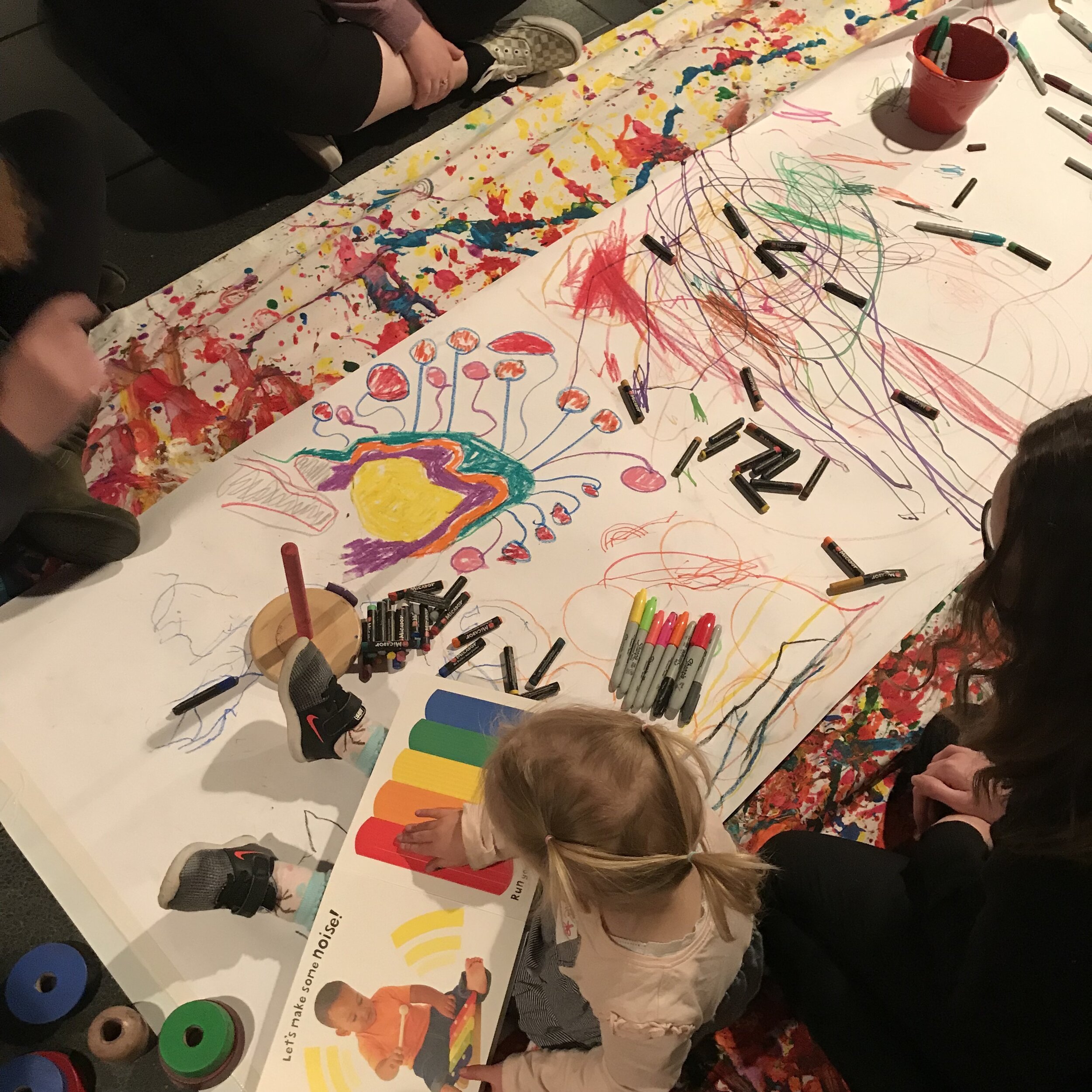
LEARNING EXCHANGE RESOURCE: The Voice of the Child
Victoria Ryle, Barbara Piscitelli , Leigh Tesch and Simon Spain
9.30am
Intro
A few words from TMAG about their work with children.
General ArTELIER housekeeping
What, why How…why are we here today?
10 – 10.45am
The Five A's: Authorship, Autonomy, Attachment, Authenticity, and Aesthetics
Using micropublishing as a tool, we will undertake a short creative learning exchange to prompt discussion around the space in our respective practices for children's agency and voice.
Using Kucirkova's (2017) 5 As of personalisation to guide the activity of children's agentic story making as a reflexive tool: to what extent are the stories based on the children’s own content? (Authorship)/ to what extent was the creation of the final product child’s independent work? (Autonomy)/ who owns the final product? (Attachment)/ to what extent do children’s stories capture content that is genuine and responsive to the child’s own situation? (Authenticity)/ to what extent does the final product reflects the child’s own taste and preference? (Aesthetics)
Victoria Ryle
BREAK
11am
Hands-on session in the B4 Making Marks exhibition - The B4 Early Years Coalition (B4) and partners invite all children aged birth to 4 years to make marks and submit their work for the Making Marks, children’s art exhibition (2019).
Making Marks aims to celebrate, nurture and support the voice of the child through art and is being held in conjunction with the Early Childhood Australia (ECA) Conference in Hobart. Approximately 60 individual works have been selected by a curatorial team led by Dr Barbara Piscitelli AM and including Simon Spain and Bec Stevens. Works selected are representative of the depth, diversity and range of art from across Tasmania geographically and within children from birth to 4 years.
In this session there will be a workshop to observe/take part in in the gallery space at TMAG (adults with young children attending)
Bec, Sheree and Simon with Barbara Piscitelli
12.15
LUNCH - BRING SOMETHING TO SHARE – all food must be in the space at the beginning of the day – sorry no coffees can be taken in…
1PM
Barbara Piscitelli (AM) – Creating, Collecting and Curating Children’s Art
In 1986, Barbara established an archive of children’s art and has created several exhibitions and catalogues from her collection. She donated the collection to the State Library of Queensland in 2004. The collection contains drawings and paintings by young children from China, Vietnam and Australia from the 1980s to present time. Barbara was former Chair of the Queensland Cultural Policy Advisory Committee, and served on the Council of the National Museum of Australia, and as a Board Member of the Queensland Museum and the Collections Council of Australia. Barbara’s research explores cultural policy and childhood, learning in museums, and early childhood visual arts education. She publishes in education and museum professional journals and consults in Australia, Singapore, Vietnam and China. She taught at Queensland University of Technology for 20 years and was Visiting Scholar at the Hong Kong Institute of Education. Barbara was recognised in the Australia Day 2006 Honours as a Member of the Order of Australia (AM). The citation for her Award reads: ‘For service to early childhood education as a teacher, to the establishment of programs in cultural institutions for children, and as a collector and curator of children’s art.
Barbara in action…
Barbara will offer a presentation followed by discussion set around a long table discussion.
Listen to this before you come to find out more about Barbara’s work https://www.abc.net.au/radionational/programs/the-art-show/why-childrens-art-matters/10499694
Simon to introduce
Barbara to lead
Short break
3pm
How are we going? – responses to the ArTELIER program. With an application about to go in about this program we want to capture your thoughts on how this program has the capacity to change your practice?
4pm
End
4.30PM
We have to be clear of the building by 4.15

LEARNING EXCHANGE RESOURCE: Decolonising Practice
Ruth Langford and Sinsa Mansell ran the one day program at The Longhouse in Hobart.
Here is a REAL SHORT video summary of the day…

LEARNING EXCHANGE: Collective Process 2
Our focus for the day:
Introduction to ArTELIER
Working together, Enabling communication and Active listening.
How do we work together as a collective? How does listening and collaboration inform our work with children and young people?
Introduction to Launceston project – Skills for Kids Cafes.
On your arrival you will be greeted with a creative encounter to welcome and embrace the beginnings of our ArTELIER connection together! We’ll be creating a name badge with expressive individualism (in true ArTLELIER style!) and we’d love you to bring along a significant something to embed into the layers of your name badge that captures and expresses in someway the essence of you.
10.00 – 11.30 : Gathering, Welcomes, Introductions, Acknowledgements, and Coffee.
Overview of ArTELIER
Presentation via video – Dr Anna Alomes, Human Rights Philosopher, Communicator and Wanderer on Global Pathways
Anna’s career began in the art world and progressed through the past two decades into the field of Human Rights, Communication & Inclusion and Mindfulness. Her mid-career PhD work took place in post-apartheid South Africa with the Truth and Reconciliation Commission alongside Archbishop Desmond Tutu and in the Himalaya with the Tibetan Government in Exile alongside the Dalai Lama. She recently returned to Tasmania from Zurich Switzerland working with the US based Mind and Life Institute (a cluster of neuroscientists, philosophers, educationalists and sociologists) working on projects that included President Obama’s Human Brain Project. Anna has done a 5 year stint in academia along the way and published a range of books and journal articles. She is currently working with the City of Hobart at the Town Hall where the connection to ArTELIER was made.
11.30 – 12.30: Introduction to Skills for Kids café
Northern Tasmania is the home to a unique pilot program that is created from the ground up and is about teaching children sustainability while cultivating meaningful cultural and social communities. This "sustainable skills cafe" concept provides an inviting space where anyone in the community could be involved. A café will be running on Friday morning concurrently in the venue. ArTELIER artists can observe and participate from 11.30 to 12 and then discuss the concept with the organisers.
12.30 - 1.15: ArTELIER discussion (including communication processes, projects, structure)
1.15: Lunch – PLEASE BRING SOMETHING TO SHARE

LEARNING EXCHANGE: Collective Process 1
The focus for the day:
Introduction to ArTELIER
Working together, Enabling communication and Active listening.
How do we work together as a collective? How does listening and collaboration inform our work with children and young people?
9.15 for a 9.30am start
On your arrival you will be greeted with a creative encounter to welcome and embrace the beginnings of our ArTELIER connection together! We’ll be creating a name badge with expressive individualism (in true ArTLELIER style!) and we’d love you to bring along a significant something to embed into the layers of your name badge that captures and expresses in someway the essence of you.
9.30: Gathering, Welcomes, Acknowledgements, and Coffee. Overview of ArTELIER
10.00 – 10.15: Introductions
10.15 – 12.15: Presentation, exercises and examples (including morning tea break) – Dr Anna Alomes, Human Rights Philosopher, Communicator and Wanderer on Global Pathways
Anna’s career began in the art world and progressed through the past two decades into the field of Human Rights, Communication & Inclusion and Mindfulness. Her mid-career PhD work took place in post-apartheid South Africa with the Truth and Reconciliation Commission alongside Archbishop Desmond Tutu and in the Himalaya with the Tibetan Government in Exile alongside the Dalai Lama. She recently returned to Tasmania from Zurich Switzerland working with the US based Mind and Life Institute (a cluster of neuroscientists, philosophers, educationalists and sociologists) working on projects that included President Obama’s Human Brain Project. Anna has done a 5 year stint in academia along the way and published a range of books and journal articles. She is currently working with the City of Hobart at the Town Hall where the connection to ArTELIER was made.
12.15 – 12.30: Discussion and questions
12.30 - 12.40: Break for snack and cuppa.
12.40 - 1.40: ArTELIER discussion (including communication processes, projects, structure)
1.40 – 2.30: Lunch – PLEASE BRING SOMETHING TO SHARE

LEARNING EXCHANGE RESOURCE: Signals, Technology, Children and Young People
ArTELIER: February 6th 2019 at The South Hobart Living Arts Centre led by Richie, Julia and Selina.
This session was titled Signals, Technology, Children and Young People, Grabbling with the challenges of accessible technology for children and young people. Examples of innovative arts practice with technology, communication and transmission.
This session started with a hands-on activity making contact microphones with Richie – DIY technology.
Provocateur: Dylan Martorell joined us from Melbourne via zoom.
Dylan outlined the development of his practice from early gallery-based works repurposing hard rubbish in to sculptural sound devices, to working collaboratively in the public space with community. Core to his practice is his background as musician, the desire to bring the energy of a gig to the art process, and his interest in found materials. Dylan referred to his collaborations as ‘cannibalised technology’ using existing technologies and materials in situations where the public often become the creators of the work. The works embody a fluid and dynamic approach where mistakes are turned into opportunities and result in works like speakers that mix spices to create a cocktail of scents using the reverb of the speakers, and drum kits activated by archery sets. After earing him speak it makes sense that Dylan’s works are public and collaborative works, Dylan points out galleries often have too many rules to allow the open approach he favours. He gave examples over many years of works done in Asia, particularly Indonesia and spoke of the ease of generating collective experiences there, noting observations in the cultural differences towards ideas of collaboration. Dylan spoke of his approach to working with kids as a kind of ‘survivalist camp’ where DIY rules. You can see solutions made structurally visible with such things as pulleys and triggers, wheels and sounds, like an anarchist adventure playground.
Julia making circuits…
Sharing Practice
Julia showed us examples of how our bodies conduct sounds and electricity, embedding a sense of curiosity, wonder and fun in all her demos. She had us hearing incredible vibrations using only fishing wire and coat hangers and showed us a 60’s device for healing through electricity. This was followed by a true collaborative lunch, tossing a salad collectively using an artfully designed bedspread ‘the egg-spread’ with a stitched in yellow yolk.
Tossing the salad
Selina demonstrated her wondrous bike powered generator that had us peddling to watch a film and shared with us the ways she runs workshops to increase awareness and appreciation of resources and our impacts.
She then led a discussion around the ethics of the use of technology reading a section of the Critical Engineering Manifesto. Point 10 for example is: ‘The critical engineer recognises that each work of engineering engineers its user proportional to that users’ dependency on it’. She shared with us the work environmental engineer Tega Brain as an example of an artist working to create systems that embed the ethics of duty of care. http://tegabrain.com/
At the start of the day Selina set us off on a digital detox, placing our phones in box for the day and leaving us with the challenge: ‘Choose a day of the week and for an entire month engage in cyber-dieting during that day, which means don’t use any technology/communications’ devices in your home’.
We finished with a jam using the bike power to create sound with our newly made contact microphones, the perfect end to the year.
The team also did a visual evaluation of the program to date.
What was the question?
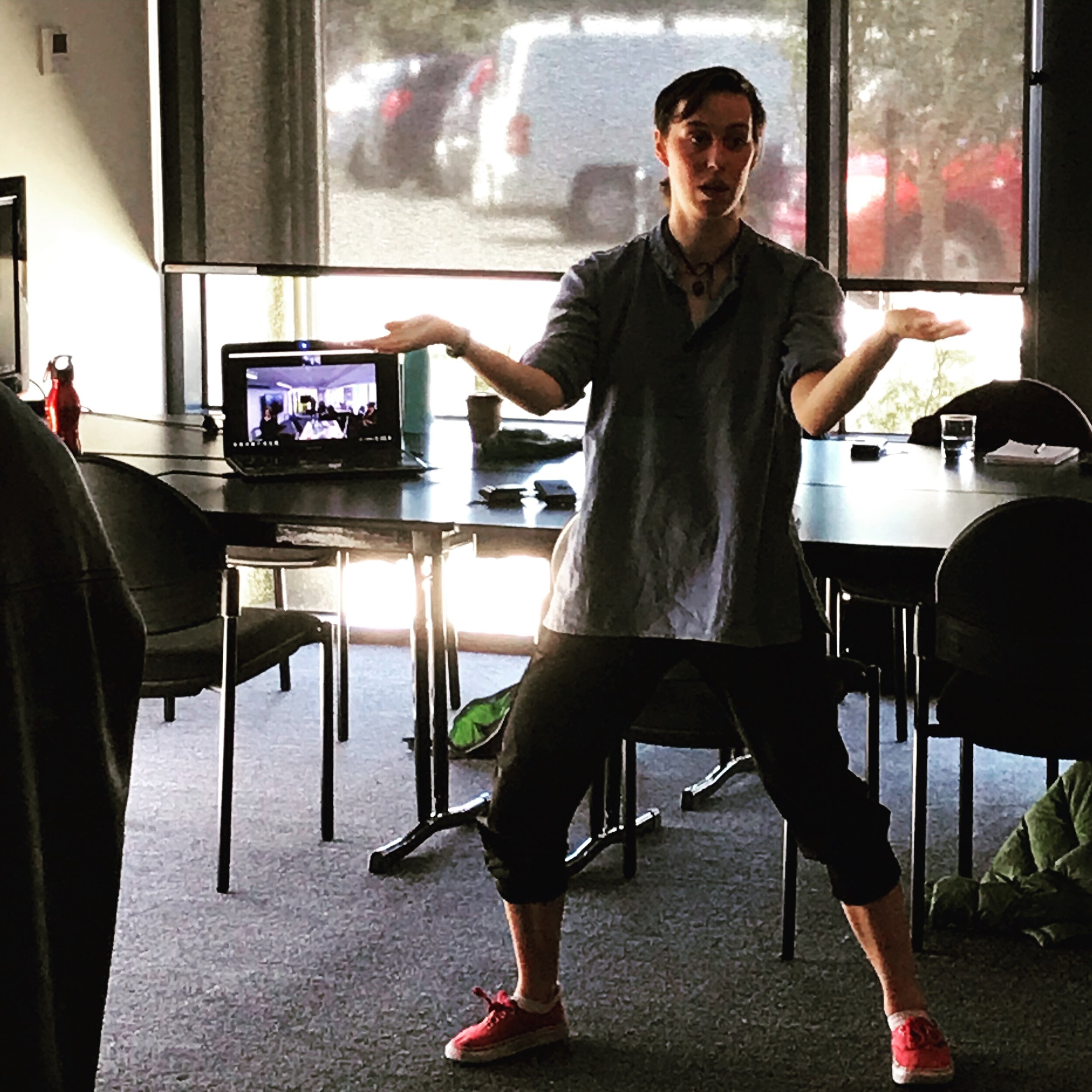
LEARNING EXCHANGE RESOURCE: Valuing Youth Arts
ArTELIER: 31st October led by Kitty and Nathan
This session was held in Windsor Community Precinct Launceston, members of the group who couldn’t make it joined us from the Underwood Centre via zoom. It was themed Valuing youth arts: as a stepping stone and place of experimentation. Empowering young people to speak through theatre and arts to adults. With the question
How do we challenge negative, perceptions surrounding student theatre, youth work, and young people’s art?
Provocateurs: Caitlin Comerford, Artistic Director of Stompin and Jack 11 year-old participants of Stompin Youth
Caitlin introduced us to the core idea at Stompin “that when young people collaborate with professional artists they can create inspiring, bold and relevant new dance works”. She detailed for us how “Stompin involves young people in every aspect of their creative process, from conception to realisation” and how the participants drive the direction of the outcome from the beginning. She explained that the youth involved in Stompin have a relationship more focused on mentorship and an authentic relationship building rather than outcomes. This mentorship exposes the participants to many levels of the performance industry and includes much more than just working on a show. Caitlin also detailed the diverse venues that the company use with each performance being site–specific. The choice of this site is driven by participants and creates a community as it develops which allows the company a wide reach in terms of audience engagement.
Caitlin was joined by 11 year old Jack, our first young provocateur. Jack spoke of being a participant in Stompin Youth and its impact on him. It was powerful to hear how confidently he spoke about the importance of of the relationships and experiences gained from his participation.
http://www.stompin.net/about
Sharing Practice:
Tesnio and boundaries in drama
Bella Young, recently returned from mentorships and work overseas presented on Empowerment in the Arts: tension and boundaries. She spoke candidly about the complexities and her difficulties in youth theatre. She led us in a powerful physical activity, exploring tension and boundaries, which heightened and challenged our awareness of our physicality in the space and our relationships to our colleagues.
Kitty and Nathan presented on their work in the arts with youth though Rising Phoenix giving examples of projects and the impacts on individuals. They also spoke on barriers to engagement and their experience, skills and strategies working with participants experiencing a range of issues such as abuse, literacy, gender, and poverty. http://www.risingphoenixstudios.org/about.html
Kitty and Nathan shared a couple of warm up activities they use and we broke into groups and undertook a drawing activity using a table and dice game to prompt collaborative drawing.
The Long Table discussion
A Long Table discussion in the afternoon allowed for lively debate about the topics discussed in the day and we concluded with a reflective walk at The Gorge.

LEARNING EXCHANGE RESOURCE: Learning on Country
This session was themed How can we decolonise practice? The big issues – Colonisation, Compassion and Climate Change, children and young people
Ruth Langford guided us on this session on Kunanyi / Mt Wellington to learn directly from the ‘most powerful of provocateurs - Country’. Ruth spoke to us about deep listening on country and invited us spend an hour of solo time to be led by country. We spent the afternoon sharing our experiences, listening to our colleagues experience within this hour of learning. This session enabled profound experiences that most in the group speak of as the highlight of all our sessions for the year.
On the mountain…
My personal learning drew me to the disturbed sites on the mountain; the springs hotel site that was destroyed by fire; a tip site for the old hotel with old broken crockery and bottles; the large tract of the power lines; the devastation by the recent storms; the strangely sited Astronomy Societies Listening Station; the fire trails and a large clump of daffodils in start contrast to the indigenous vegetation. Feeling overwhelmed by this walk through area after area of disturbance within the national park I found a protected rocky scree that was covered with incredibly diverse, dense and old mosses. This space felt nurturing and allowed reflection on the disturbed sites. Later when we shared our experiences with the group we found that many of us ended up being drawn to these mossy spaces around the springs. Sinsa Mansell, who describes herself as a ‘proud Pakana woman’, after hearing many of us speak on being drawn to these mossy spaces shared that in indigenous culture Kunanyi is considered feminine and that the mosses are regarded as important female element. She mentioned that the mountain had been a place for birthing. I thought about this for some time afterwards and it led me to reading the book Gathering Moss by the scientist and Indigenous American woman Robin Kimmerer. After much searching Robin found that mosses were used traditionally by women for their absorbancy, for birth, babies and menstruation. This helped me to understand a little of the mountain and idea of mosses as a female element.(Bec Stevens)
In the afternoon we met at UTAS for a Riawunna Lecture by Jimmy Everett-purlia meenamatta titled Learning to Understand “How do Aborigines define themselves in a world dominated by non-Aboriginal cultures and philosophies? Is there a difference and if so what is the difference? Why are cultural awareness programs for white people inadequate in trying to educate them to understand?
Jimmy began by talking about Pat Dodson’s statement that aboriginals are “something else citizens” he spoke strongly about what he understands as the ‘state of exemption’ that aboriginal cultures live within and suggested this in effect is “insidious cultural genocide”and allows the breaking of human rights.
Allowing space to reflect on this confronting introduction Dougie Mansell sang a beautiful song with guitar.
Jimmy spoke a great deal about his understanding of philosophy as ‘thinking about thinking’ and the importance of original philosophy as it relates to indigenous culture, as being inclusive and about dialogue, ceremony and understanding each other’s differences. He spoke in favour of community development and using the cultural arts for change. He reflected on the importance of knowing ourselves, ruminating that questions around identity are often asked to the aboriginal community, provocatively he flipped the question: “If Aborigines were to ask you white people to explain your identity what would your reply be? “
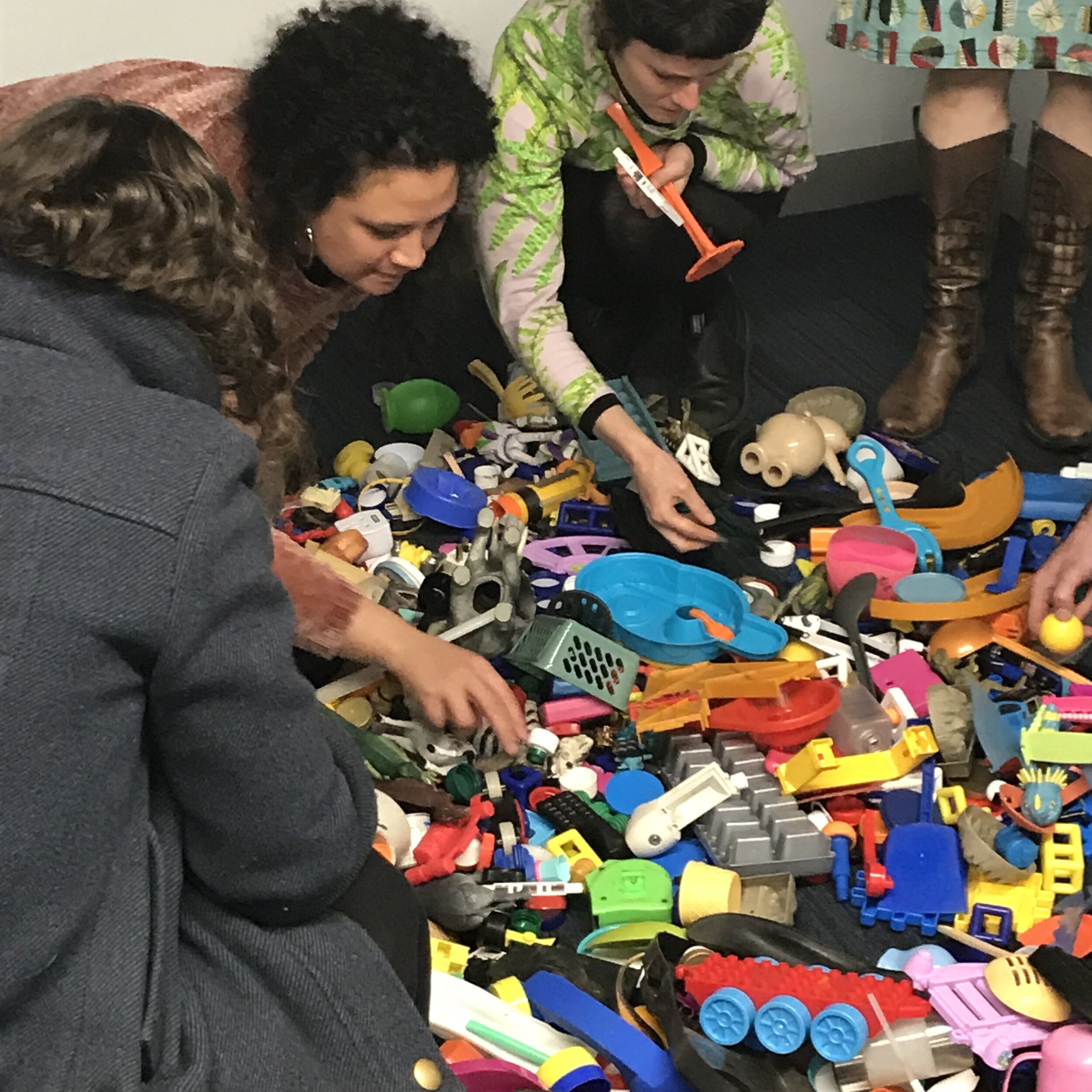
LEARNING EXCHANGE RESOURCE: Building the value of the creative arts in education
ArTELIER: 25th September at The Underwood Centre led by Andy Vagg.
This session was themed Building the value of the creative arts in education, Developing a creative culture within a school environment, that has a focus on creativity, social cohesion, exploring ideas and problem solving. Also: A look at the role of the artist in the residence style of program.
Provocateur: Eric Booth joined us from the USA
Eric Booth calls himself “the oldest living teaching artist” but others call him “the father of the teaching artist profession. “A Teaching Artist is a practicing artist whose teaching is part of that practice. Teaching Artists don't necessarily have education degrees, but they might. Teaching Artists are role models for lifestyle, discipline, and skill. They pass on an oral and experiential tradition in ways of thinking, seeing, and being”
http://ericbooth.net/category/teaching-arts/#
Eric spoke passionately about the importance of the teaching artists and the changing demands on artists over time particularly in terms of shifts post market crash of 2008 in the USA.
He shared his ideas of the prime goals of a teaching artist being:
· To activate the artistry of others
· To have faith in the creative powers of others
· To become guiders
· To shine a light on what others personal relevance is
· To bring out the strengths in each person
· To re-dress the balance of process and product
He ruminated that the teachings artists job is “to find GREAT QUESTIONS – The highest quality questions, remembering that there are no questions with a single answer” and explained in brief his 80% law that “being the fullest, best artist is most important as students observe that and absorb it.”
He spoke much of the value of reflection, “If we do not reflect on our experiences we do not learn from them”
Eric ended by speaking about preparation, that it is of primary importance to demand prep time before work begins and that this is becoming a norm in the USA.
Shared practice:
Tullia Chung Tilley as a teacher and dancer spoke on possible avenues for teaching artists to think about ways of presenting projects to schools that fit the curriculum. She unpacked the school curriculum for us explaining that projects that are integrated with, and help cover the curriculum, are often welcomed. She gave examples of STEAM practice and guided us in a physical activity exploring literacy and movement.
In thinking about youth Tullia posed the question of how do we skill young people for their future? She introduced the acronym VUCA: Volatile, Uncertainty, Complex, Ambiguity and proposed a flip of Velocity, Unorthodoxy, Collaboration, Agility as ways of thinking about developing strategy.
Andy Vagg’s plastic toys
Andy Vagg, experienced local teaching artist spoke to us about the many projects and experiences within schools sharing with us a video made of his experience as artist in residence at Bridgewater High School: https://www.youtube.com/watch?v=DZkTn90W5qA
Andy led us in a simple and profound activity, Plastic Fantastic, that he has refined to its essence over some time to enable multiple and complex activities and learnings to arise within groups.
Andy and Tullia then hosted a Long Table discussion with curly questions about our impact as artists and working within organisations.
Saran Wright at The Long Table
Simon Spain & Victoria Ryle Report from ITAC4 IN NYC where they presented with Leigh Tesch. The conference theme was Artist as Instigator: The Role, Responsibility and Impact of Artists in Global Communities http://www.itac-conference.com/conference/itac4/

LEARNING EXCHANGE RESOURCE: What do we mean by participation and engagement?
This session sought to identify key themes.
Our first session where we met our fellow ArTELIER colleagues was held at two locations, All That We Are at Pipe Clay Lagoon followed by an afternoon session at the Underwood Centre, as an introduction to our partnership with them.
This session was framed by the question What do we mean by participation & engagement?
Ruth Langford delivered a welcome to country and spoke on Deep Listening as the listening to all living things without overlaying judgement or reaction. She invited us to pair with another to introduce ourselves and practice deep listening - the perfect way to begin an artist led community of inquiry.
Provocateurs: Madeleine And Tim Humphrey
“Madeleine and Tim are artists who create unexpected situations for listening. They have a long-term collaborative practice. Their work is driven by a curiosity for questioning and listening in human culture and seeks to evolve and engage with new processes and audiences through public and private interventions. Their practice intertwines local, national and international relationships”.
http://madeleineandtim.net/practice/
Madelein and Tim’s talk focused on creating works within festival contexts showing us a number of their poetic and beautifully resolved pieces, such as the Megaphone Project, that draw viewers into a exploratory process of discovery with sound. They spoke of creating platforms for engagement, encouraging risk taking and the ‘disappearing ego’. In responding to festival requests for their works they spoke about doing a combination works that allow them to cater for mass audience interaction as well also creating as intimate small-scale works. They reflected that the smaller scale works are often well suited to kids and suggested ways to pitch these kinds of works to festivals. Time was given after this presentation for questions and reflection.
Following this a key aim for the day was to co-create the themes for the monthly discussions for the year. In the week before the session we all emailed in a question that is pivotal to our practice, during this session we brainstormed and grouped these to form a yearly agenda for ArTELIER.
At the Underwood centre in the afternoon we were introduced to the staff and facility. Simon Spain ran a hands-on workshop, Self Assembly, in which we paired up to created a figure out of plaster bandage and branches. Working collaboratively is essential to making these figures and to forming them into a group that are inter-dependent, relying on each other to stand. The activity becomes an embodied metaphor for collaboration.




